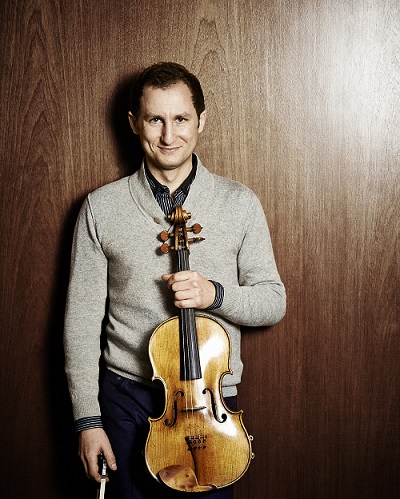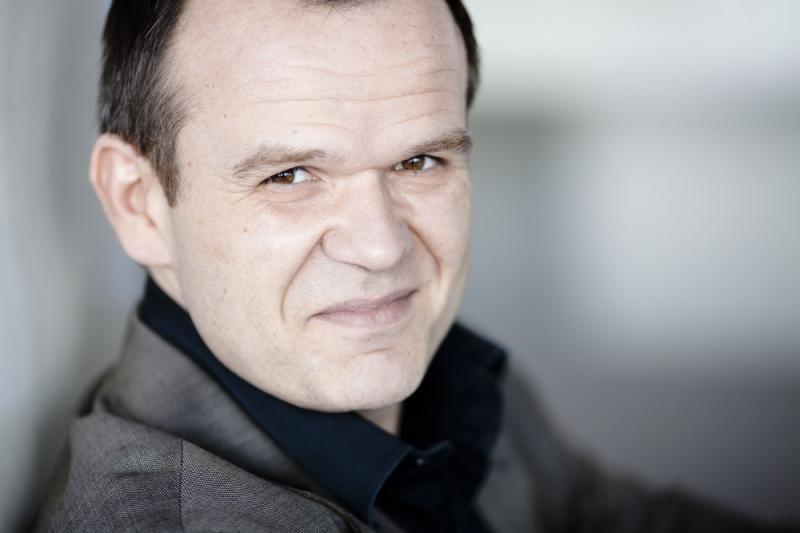François-Xavier Roth is a distinctive presence at the podium. He is short and immaculately attired, and first appearances could lead you to expect a civilised and uneventful evening. But the facade soon drops. His movements are brisk and erratic, as he conducts without a baton and instead shakes his outstretched hands at the players. He often leaps into the air, landing in a fierce pose directed at one of the players, before returning to his repertoire of small, indistinct gestures.
Yet the results are impressively detailed and precise. Rhythmic clarity is a hallmark of his interpretations, with important motifs always cleanly voiced and dominant. And, despite that attention to detail, he always keeps the bigger picture in mind – however radical his interpretations, the architecture is always secure, a key virtue for the Bruckner that ended the programme.
Every one of these passages seemed to serve a key function
But lighter fare to begin, Debussy’s Prelude l'après-midi d'un faune. Flautist Gareth Davies could probably play the opening in his sleep, but he is still able to keep it fresh and graceful. In fact, there was ample ebb and flow throughout the piece, but it was hard to ignore that the conductor was driving through every phrase, studiously avoiding any hint of Romantic excess. A gently radical reading then from Roth, suggesting a constructive tension between the elegance of the orchestral playing and the dynamic interpretation he was keen to impose.
Bartók’s Viola Concerto is a rarity on the concert stage, a surprise given both its quality and the scarcity of such works in the repertoire. Its neglect may be due to the fact that the composer left it unfinished at his death. But a completion was made soon after, by Tibor Serly, which received the endorsement of William Primrose, the player who had originally commissioned the piece. Since then, Bartók’s son, Peter, has been involved in further editing, as has the soloist here, Antoine Tamestit, who appears to be one of the work’s major advocates today.
Tamestit (pictured below by Alescha Birkenholz) has everything the work needs – tonal focus, a feeling for the folk influence and unshakable virtuosity. The concerto seems to invite, without specifying, a range of tonal colour (the programme note tells us the composer was initially reluctant to write for an instrument he did not know well), and Tamestit clearly has the musical imagination to fill in the gaps. The concerto opens with a duet between viola and timpani, but as the first movement unfolds, the textures become more conventional. Even so, both Tamestit and Roth were able to keep the surprises coming, finding a broad range of nuances of texture. The second movement is marked lento, yet contains some of the most virtuosic music for the soloist, and Tamestit’s technique here was flawless, clearly articulating every note of each run. The finale is a collection of folk dances, performed here with suitable rustic flavour, and with Tamestit tapping his foot throughout, suggesting a playful agility too rarely associated with the instrument.
 Francois-Xavier Roth is known for his historically informed performances of Romantic repertoire, with the period instrument orchestra Les Siècles, which he founded in 2003. It is surprising, then, to find him at the revisionist end of the Bruckner spectrum, here performing the Fourth Symphony with fast tempos, emphatic accents and a minimum of rubato. What we lose are the many moments of repose, where the symphonic argument is briefly suspended for a moment of sheer beauty, a lingering cello line, say, or a songful interplay between clarinet and flute.
Francois-Xavier Roth is known for his historically informed performances of Romantic repertoire, with the period instrument orchestra Les Siècles, which he founded in 2003. It is surprising, then, to find him at the revisionist end of the Bruckner spectrum, here performing the Fourth Symphony with fast tempos, emphatic accents and a minimum of rubato. What we lose are the many moments of repose, where the symphonic argument is briefly suspended for a moment of sheer beauty, a lingering cello line, say, or a songful interplay between clarinet and flute.
In this performance, all of these were swallowed up into the flow, not unrelenting, but clearly pursing other goals. What we gain is a clearly conceived and communicated structure, with everything fitting into the hierarchy and the music moving smoothly from one idea to the next. Again, the sheer elegance of the orchestral playing mitigated Roth’s sometimes ruthless drive, and overall the result was a qualified success. The outer movements fared better than the second and third, though. The second, curiously, was taken very slow, but again with little rubato, and Roth’s insistence on accenting the dotted note motif every time risked monotony. The third, by contrast, was fast and loud, good for the woodwind and strings, but less so for the brass, whose fanfares blurred into an indistinct mass.
Roth appended the 1880 version of the finale to the 1874 versions of the first three movements, perhaps in an attempt to find a more coherent logic in the symphony’s problematic coda. But even with this combination, the last few minutes are far from compelling, with the momentum dropping on several occasions as the composer struggles to find his direction. Fortunately, Roth’s sense of structure came to the rescue here, and every one of these passages seemed to serve a key function, before the symphony came to a decisively emphatic close.
- This concert was recorded for future broadcast on BBC Radio 3
- Read more classical music reviews on theartsdesk














Add comment